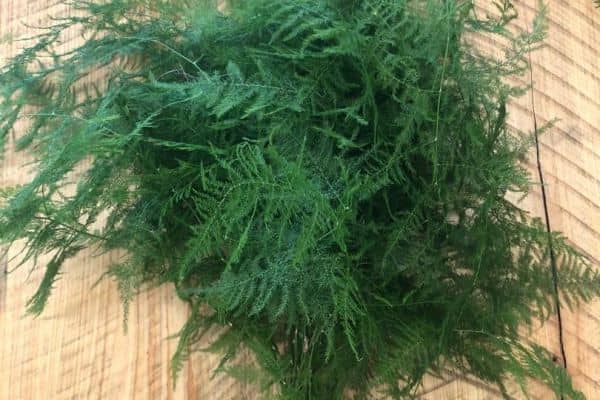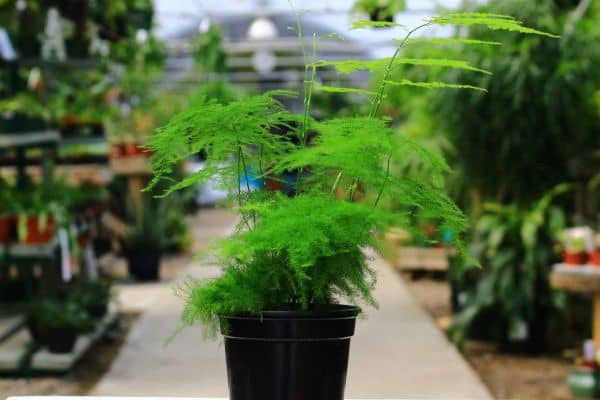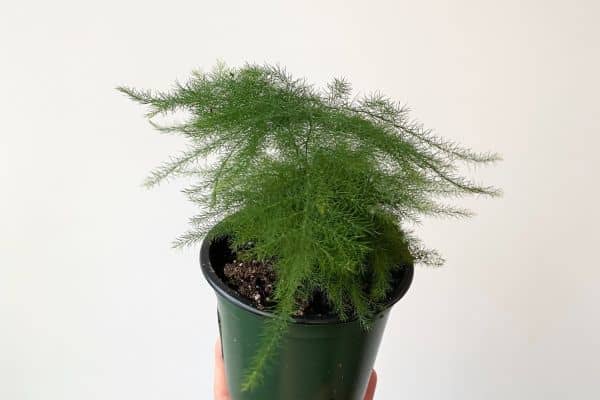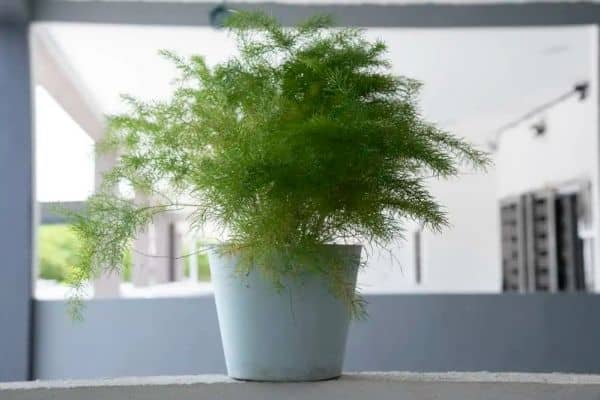Plumosa Fern Care Guide
Light
As for light Plumosa Ferns thrives in bright and indirect light as they are perfect in filtered sunlight, as direct sunlight can scorch their leaves.
But if you plant them indoors window with sheer curtains would be ideal for them as it will provide them ample light without exposing them plant to harsh rays.
Water
As for water Plumosa Ferns’ needs vary with the seasons during spring and summer the compost should be kept moist as the plant is actively growing but remember not to be waterlogged. During the Autumn and Winter seasons, you have to reduce water while allowing the topsoil to dry out slightly between waterings.
You can also mist or place the plant in a humidity tray as it will help them to maintain their moisture level.

Soil
As for soil Plumosa ferns need soil-based compost that provides proper drainage for the plant. Proper drainage is needed as it will lead the plant root to rot and prevent waterlogging.
They grow well in slightly acidic soil with good drainage and you can also add perlite or coarse sand to improve soil aeration and drainage.
Temperature and Humidity
As for temperature Plumosa ferns require a minimum temperature of around 13 degrees Celsius or 55 degrees Fahrenheit and should be kept away from draughts and radiators. Around 77 degrees Fahrenheit is ideal for the plant.
As for humidity, Plumosa ferns require high humidity levels and to fill their humidity requirement you can just mist regularly using a pebble tray or grouping plants can help achieve this.
Fertilizer
As for fertilizer, Plumosa ferns need monthly application of liquid fertilizer during the growing seasons of spring and summer to provide the necessary nutrients.
You can use a balanced, water-soluble fertilizer monthly in spring and summer and dilute the fertilizer to half the recommended strength to avoid overfeeding.

Plumosa Fern Growing Guide
How to Propagate Plumosa Fern
As for Propagation, you can use the seed method where you plant a seed berry produced by the Plumosa Fern containing seeds. You can also use the division method by dividing the tuberous roots and planting them separately as this method is a lot more successful than seed.
Potting and Repotting Plumosa Ferns
As for potting and repotting you should choose the right soil with loose, well-drained potting soil. Then you can repot the plants every couple of years, particularly in spring and then after they grow properly or are well settled you can move them to the ground or garden.

Pruning
As for pruning remember that these ferns are fast growers, and pruning helps maintain their shape and size. You can use clean, sharp shears to cut at the base of the unwanted stems off the Plumosa Ferns.
Overwintering
During winter or cooler climates Plumosa Ferns need a lot of care if you have planted outdoors and the temperatures in your area drop below 55 degrees Fahrenheit you can simply bring them indoors and place them in a location where they can receive bright while reducing water.
Pests and Diseases Plumosa Ferns
As for pests and diseases, Plumosa Ferns can attract Spider Mites, Aphids, and Mealybugs, and here is the cure for those pests and diseases:
Spider Mites: Spider Mites can cause significant damage by feeding on the plant’s sap and can lead the plants to get yellowing and browning of leaves. They thrive in dry conditions so increasing humidity can help prevent infestations.
Aphids and Mealybugs: Aphids and Mealybugs can also be problematic and they suck the plant’s sap from the fern and weaken it. You can see the sticky residue or cottony substances on the plant for its traces and to get rid of it you can use insecticidal soap is an effective treatment against these pests as well.
Also read: Here Are 10 Ways You Can Use Baking Soda and Hydrogen Peroxide to Clean Your House!
